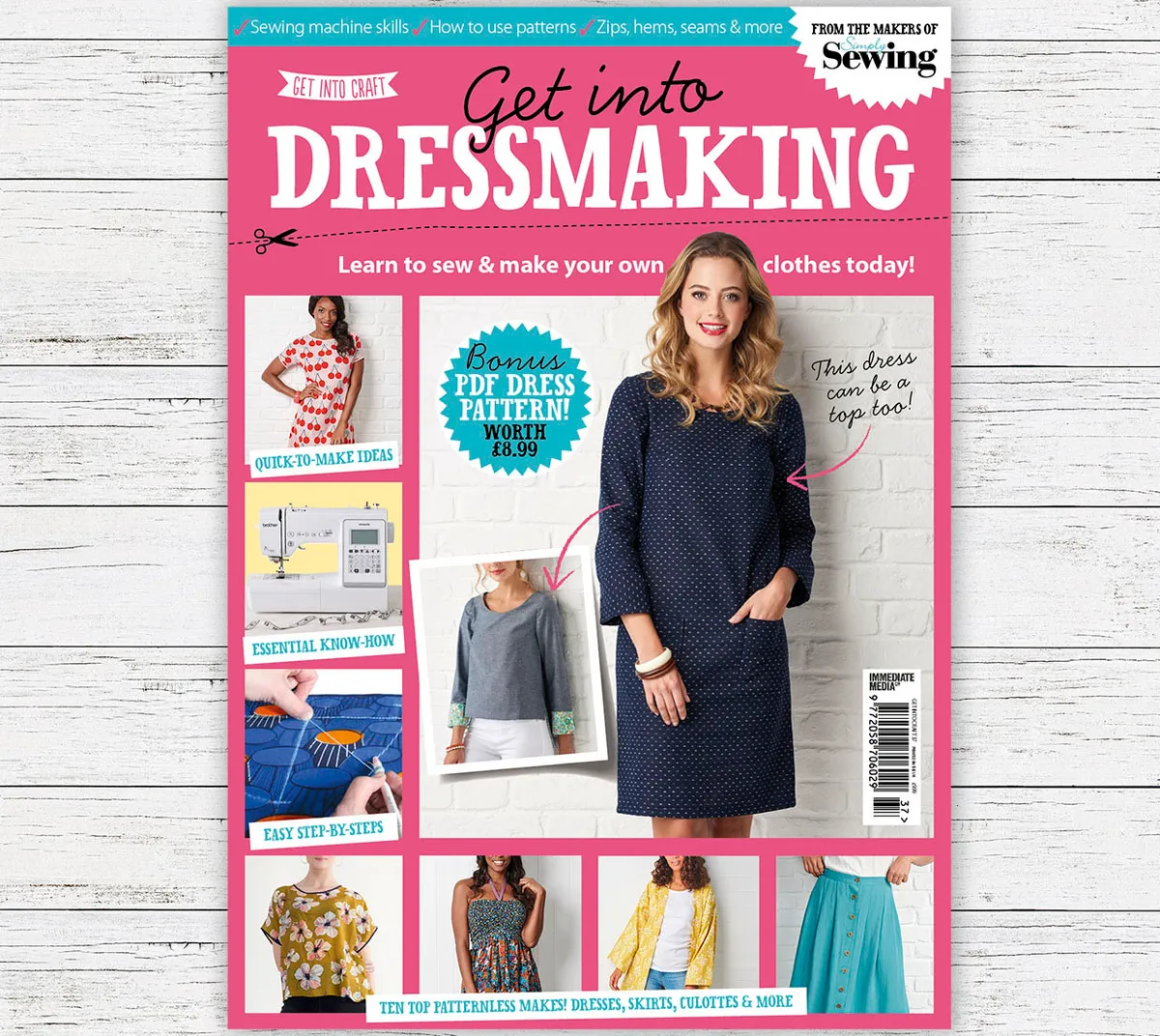Take your measurements
Step 1
The first step to creating your own wrap dress pattern is to take and make a note of the following width measurements:
- A = width of neck opening
- B = shoulder to shoulder (for A and B measure across the front of the body only)
- C = bust
- D = waist
- E = hip (for C, D and E measure all around the body).
See our guide to how measure yourself.
Step 2
Next, take and make a note of the following length measurements: 1 = base of throat to centre of bustline; 2 = centre of bustline to centre of waistline; 3 = centre of waistline to centre of hipline.
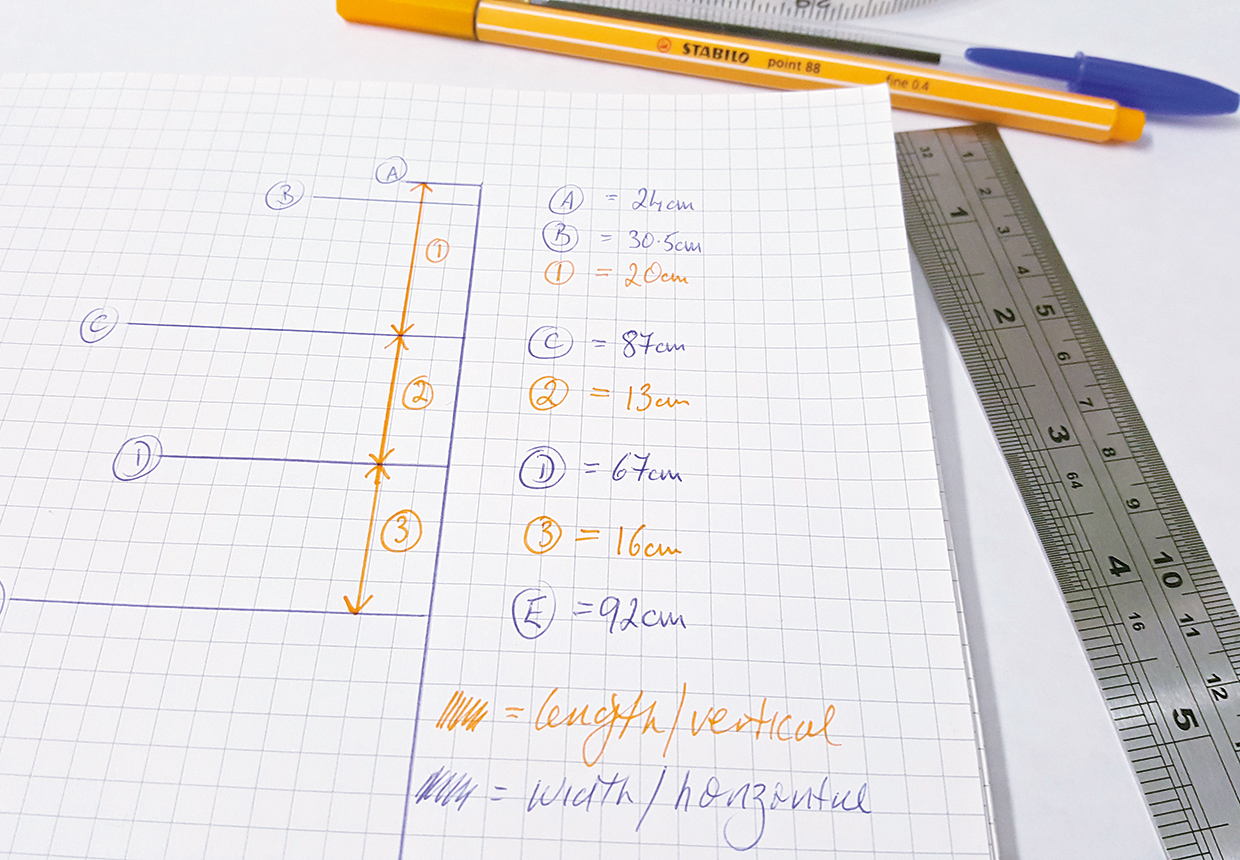
Step 3
Now you need to add some ‘wearing ease’ to some of these measurements, and then use them all to create a pattern piece that is a quarter of the size/measurements of the final garment. You will be cutting two pieces on the fabric fold. Calculate this as follows: for A & B divide by 2. For C, D & E add 8cm (31⁄8in) then divide by 4. Length measurements 1, 2 and 3 remain the same.
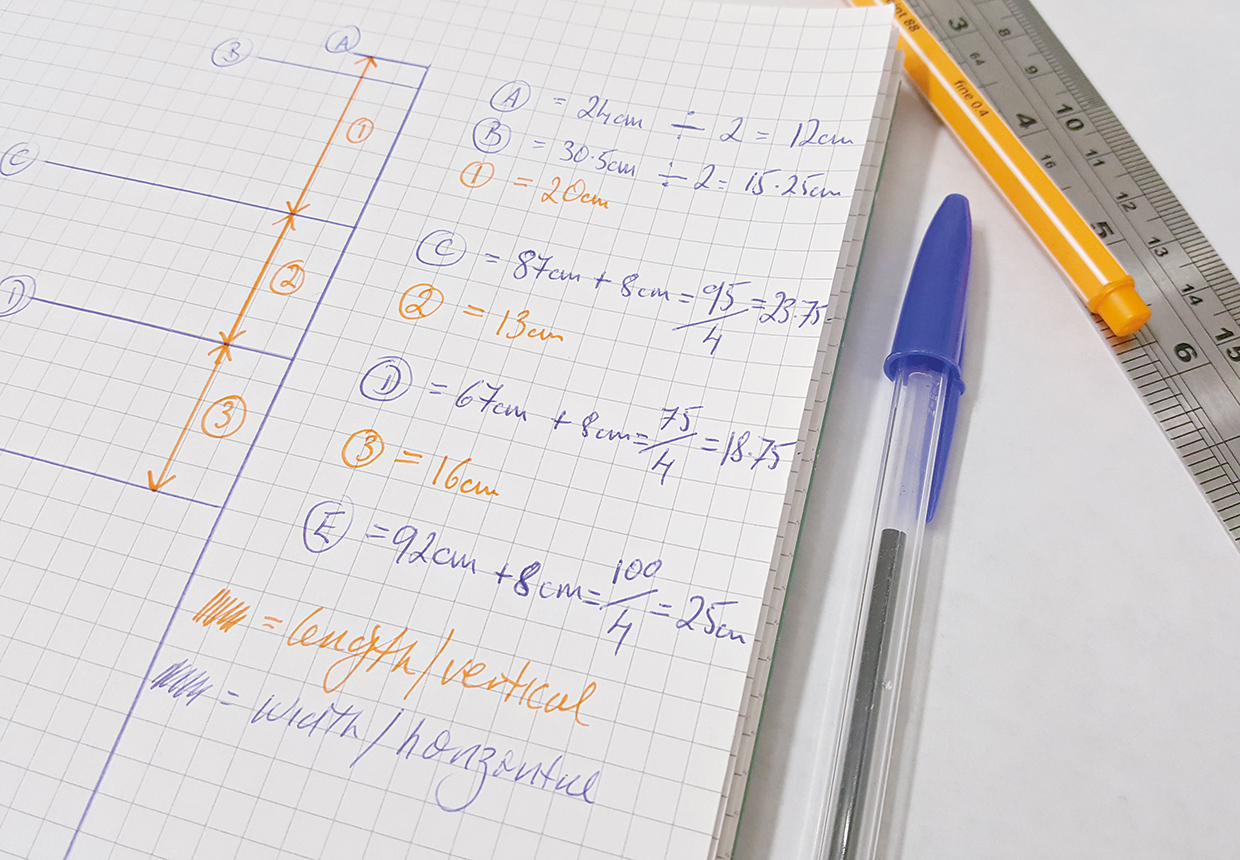
Draw the paper pattern
Step 1
On your pattern paper, draw a long vertical line (this is your CB/CF line). Plot your length measurements 1, 2 and 3, and mark them C, D and E to indicate where your width measurements will be calculated from.
Step 2
Plot two further length measurements as follows: F = distance from the waistline at D to the hem (ours is 60cm (235⁄8in); G = a new point 6cm (23⁄8in) up from the top of the vertical line you drew.
Step 3
Next, plot your width measurements from step 2. C, D and E (bust, waist and hip) will be in line with the ends of lines 1, 2 & 3.
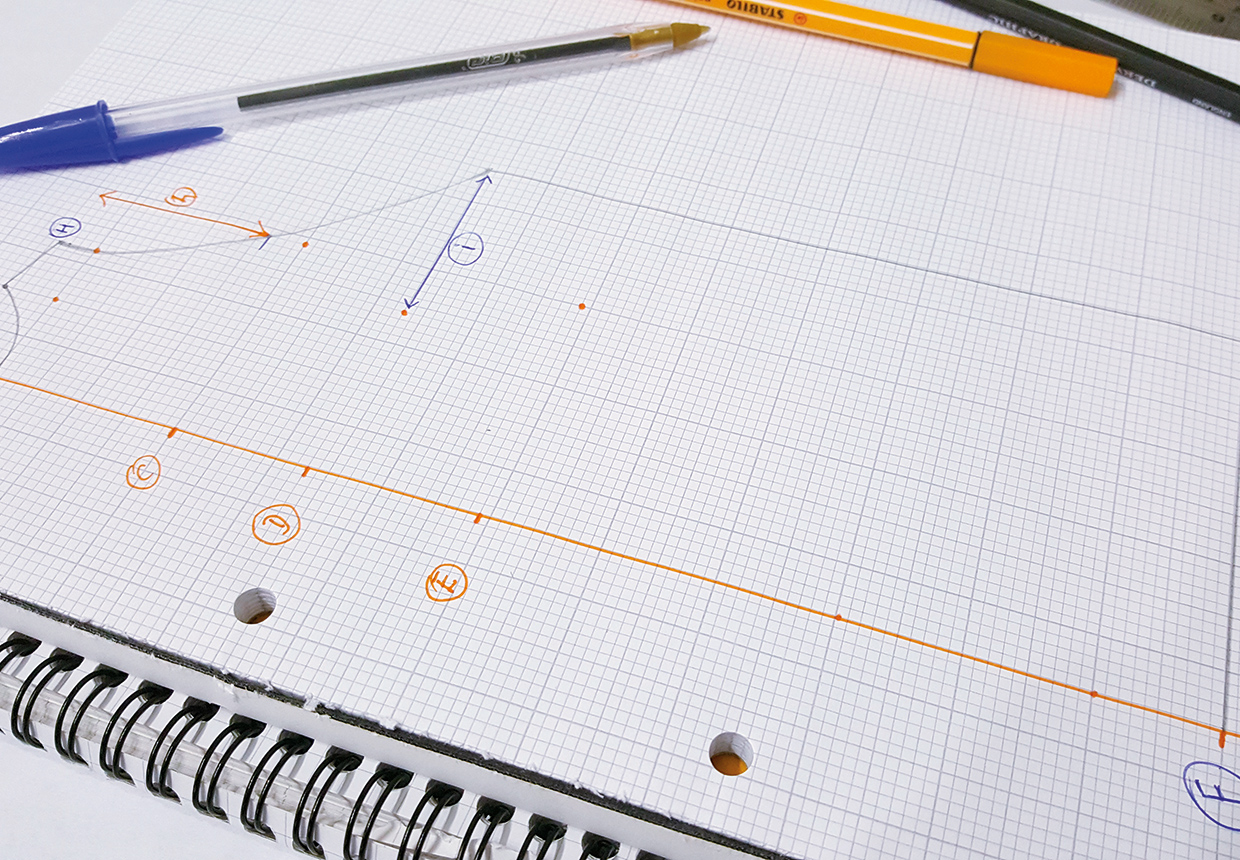
Step 4
A is raised 6cm (23⁄8in) to be in line with your new point G. This is a dot on the shoulder line. B is 3cm (1¼in) lower than A to create your shoulder slope and now marked as H in the image. You can see the original A & B points plotted just below as orange dots. J is where we have extended the waistline out for the wrap effect. The amount it has been extended by (I) is exactly the same as your second D measurement minus 2cm (¾in).
Step 5
Join H to J with a long sweeping curve. Mark a notch on this long curve 20cm (77⁄8in) down from H for your armhole opening. Square down from J and across to F, as in step 6, above.
Step 6
Join A to H for the shoulder, and then A to the CB/CF with a curved line – this will be the neckline.
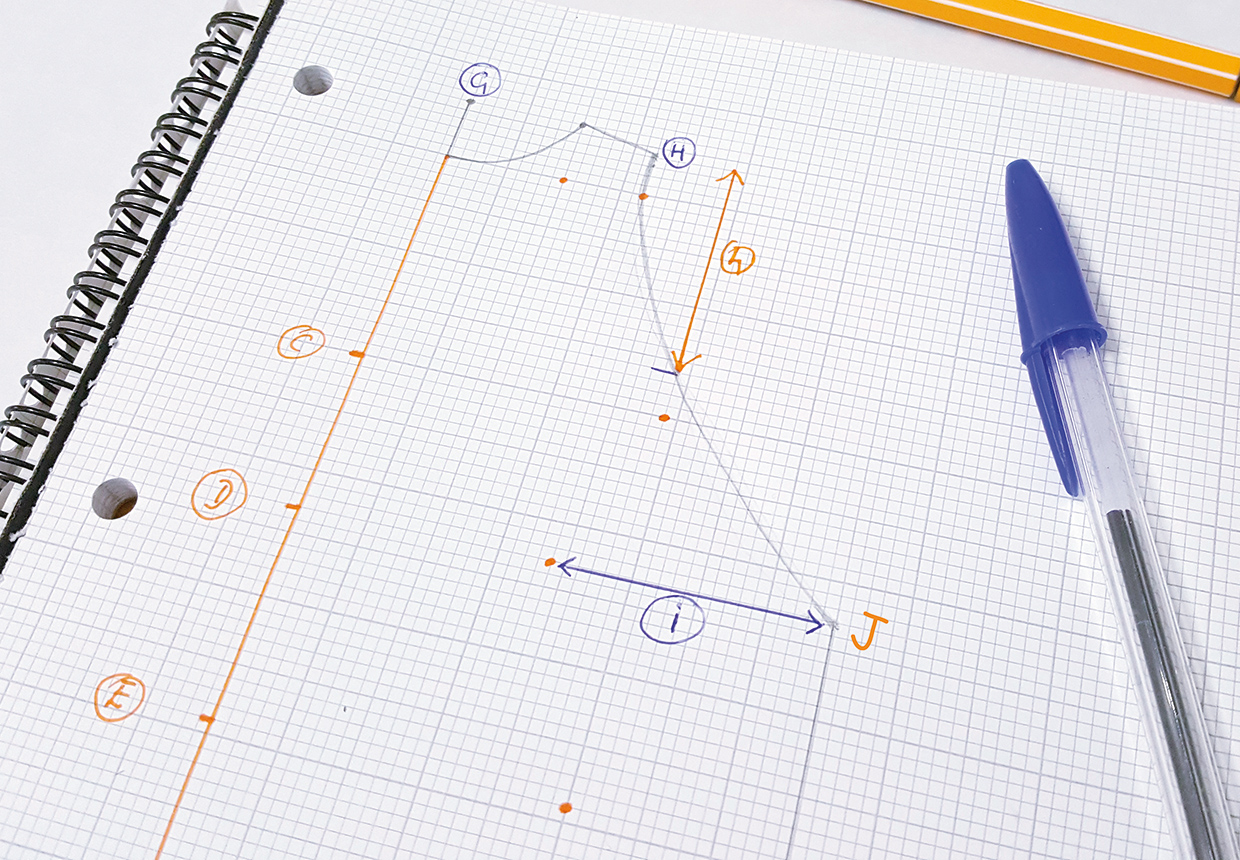
Cut out the pattern
Step 1
Add a 1.5cm (5⁄8in) seam allowance everywhere apart from the neckline, where you’ll only need a 1cm (3⁄8in) seam allowance. Make sure to transfer the notch marking at the armhole. Mark additional notches to the centre of the shoulder and half way down the side seam, then cut out your pattern. Your DIY wrap dress pattern is ready to get sewing!
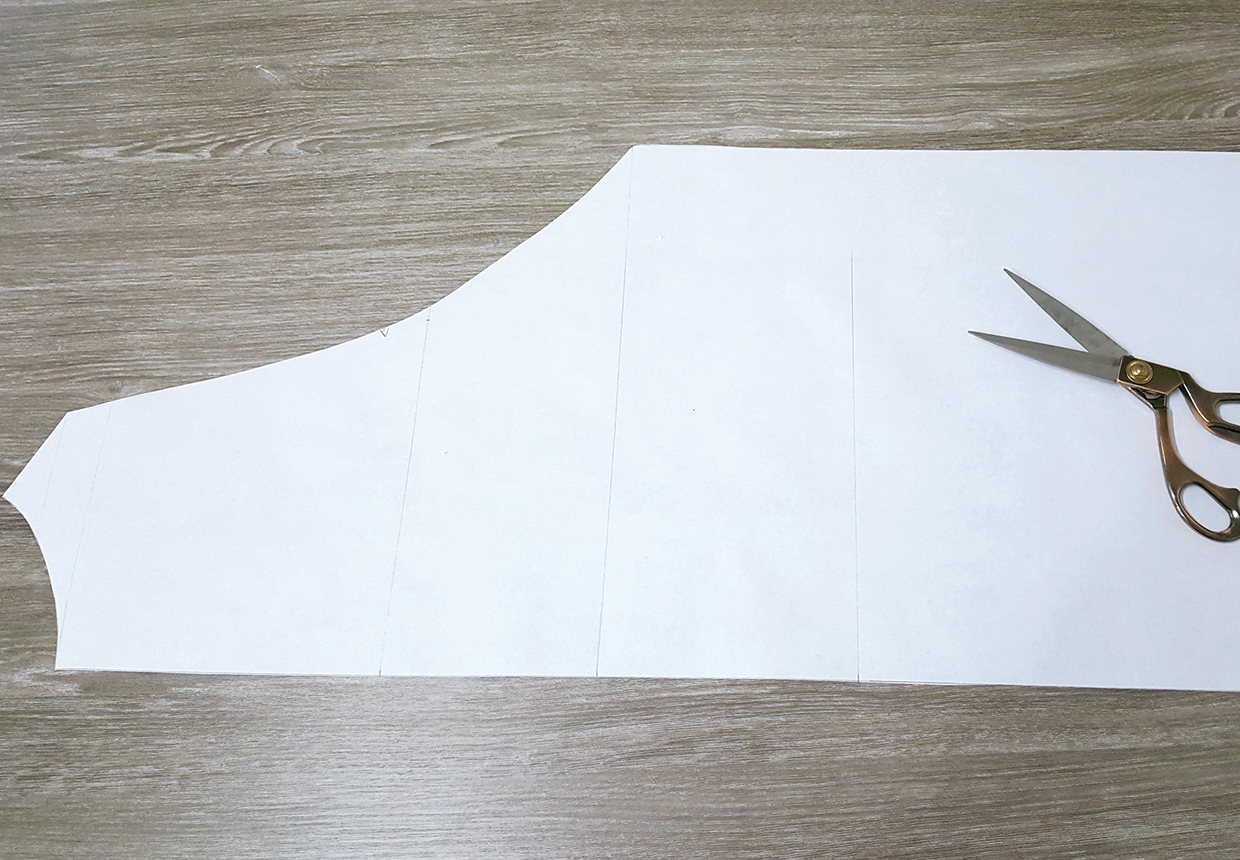
Cut out the fabric
Step 1
Fold the fabric in half parallel to the selvedge with right sides (RS) together. You will need to cut lengths for the ties, so fold it over just enough to fit the pattern piece. Lay the paper pattern on the vertical fold line and pin. Cut the first piece of your pattern on the fold, making sure to transfer all notches. Repeat for the second piece.
Step 2
For the ties, cut two long strips that measure D x 2 in length and 12.5cm (5in) wide.
Make the dress
Step 1
With RS together, join the two pieces at the shoulder seams. We’ve used an overlocker, but if you’re using a standard sewing machine then sew the seams, press open and flat, and then finish the raw edges.
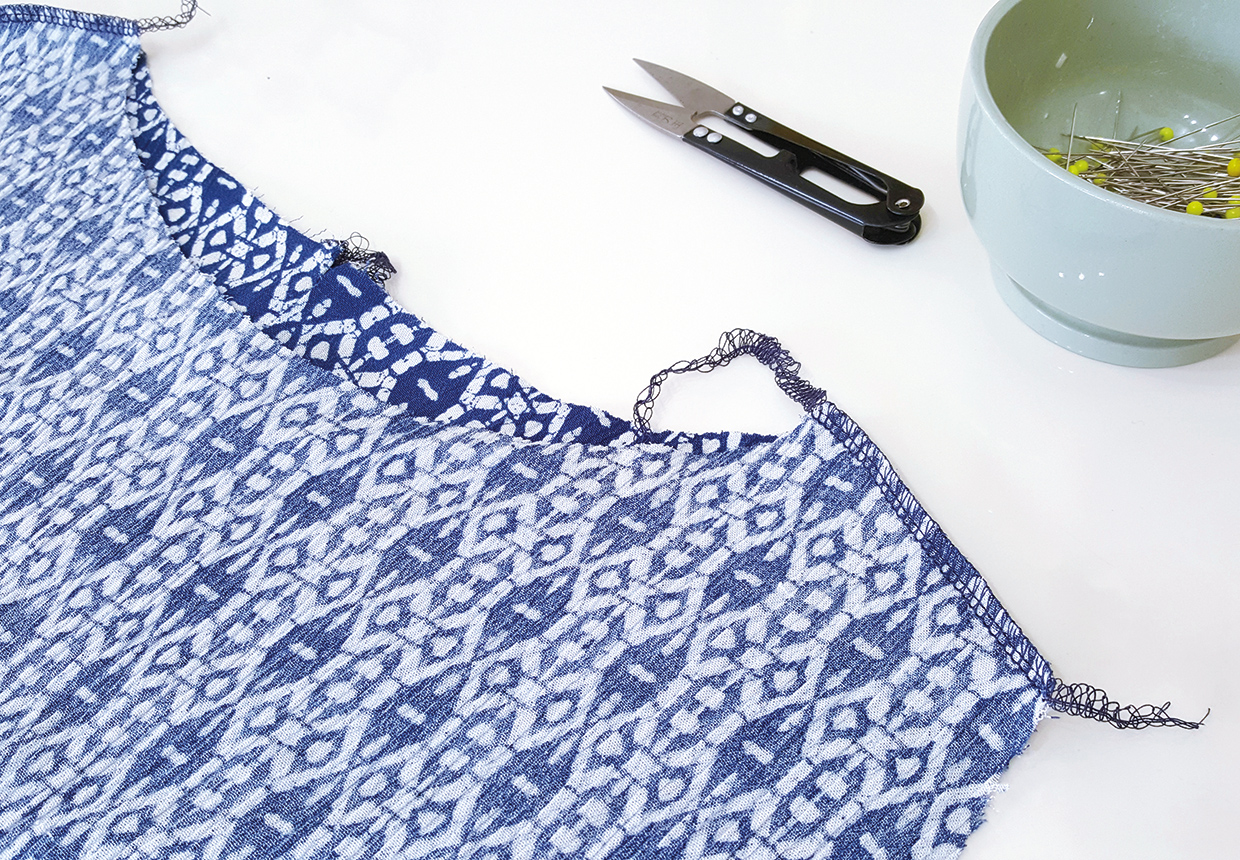
Step 2
Fold the tie pieces in half lengthwise, RS together, and sew along the long edge and at an angle across one of the short ends. Leave the other short end open. Turn through to the RS – you may find the blunt end of a long knitting needle useful. Press flat.
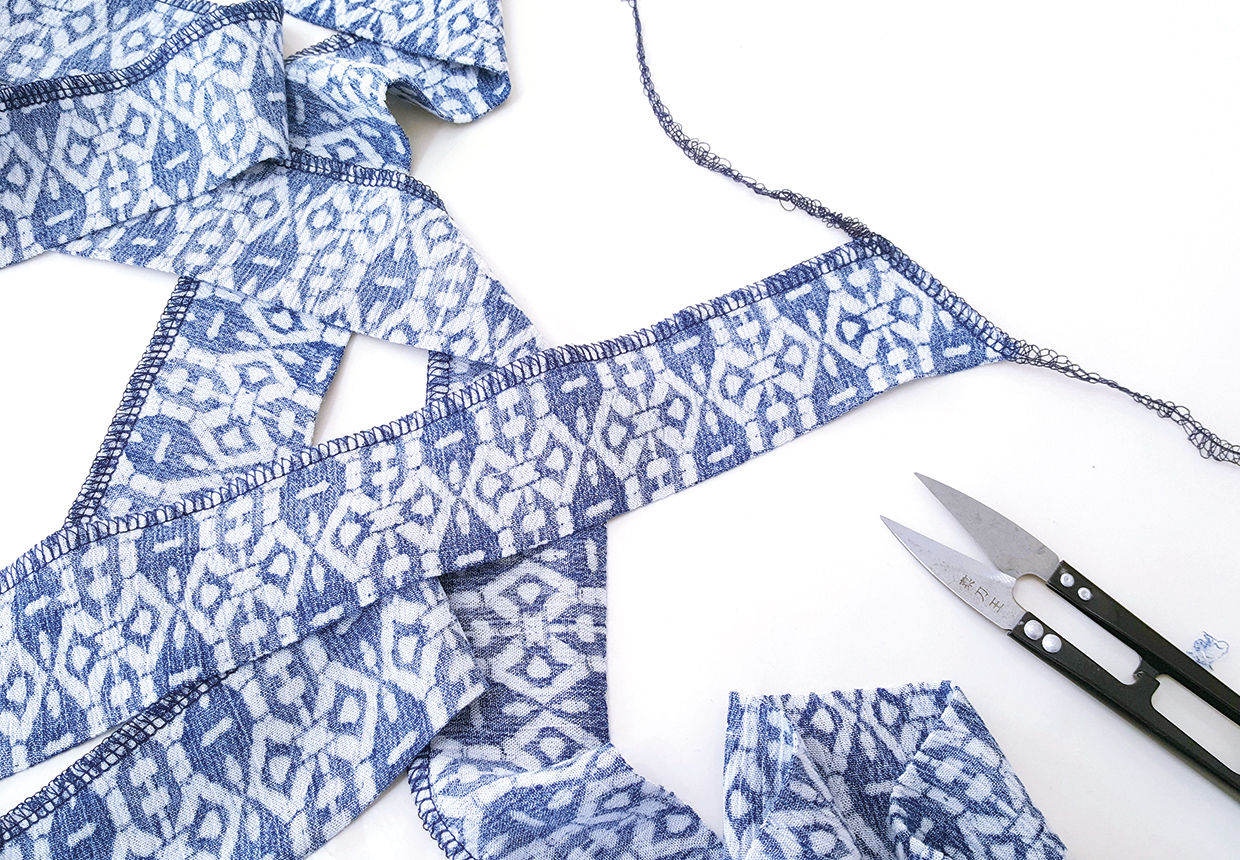
Step 3
Position the unfinished end of the tie perpendicular to the side seam. Place it right in the corner where the curve up to the armhole begins, with RS together, on the front section of the dress and pin.
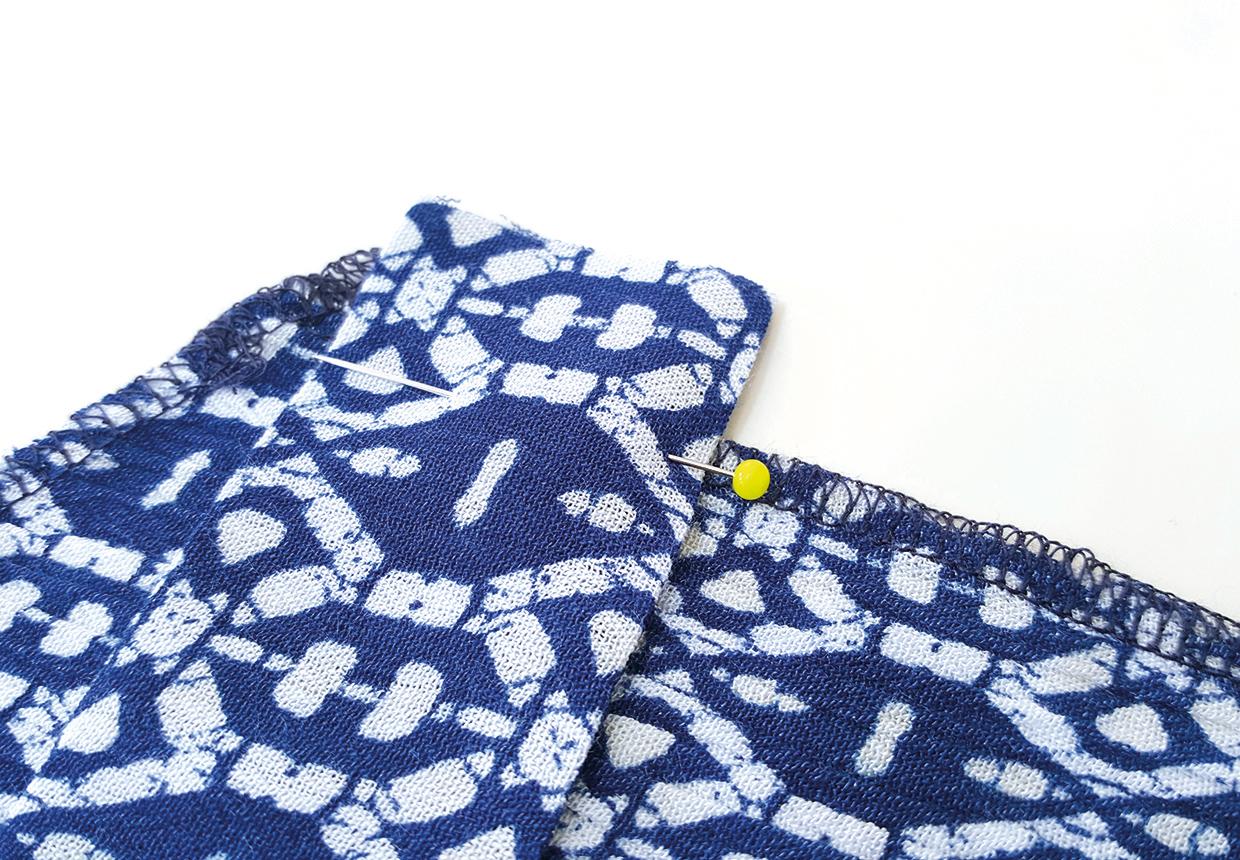
Step 4
Pin the back of the dress on top of this, RS together, to create a sandwich.
Step 5
Backstitch the armhole-curve notch (the pen in the picture is pointing to it) to secure it. Starting at this point, sew to the end of the curve, stopping at the corner with the needle down. Lift the presser foot, pivot your work, then continue sewing down the side seams all the way to the hem.
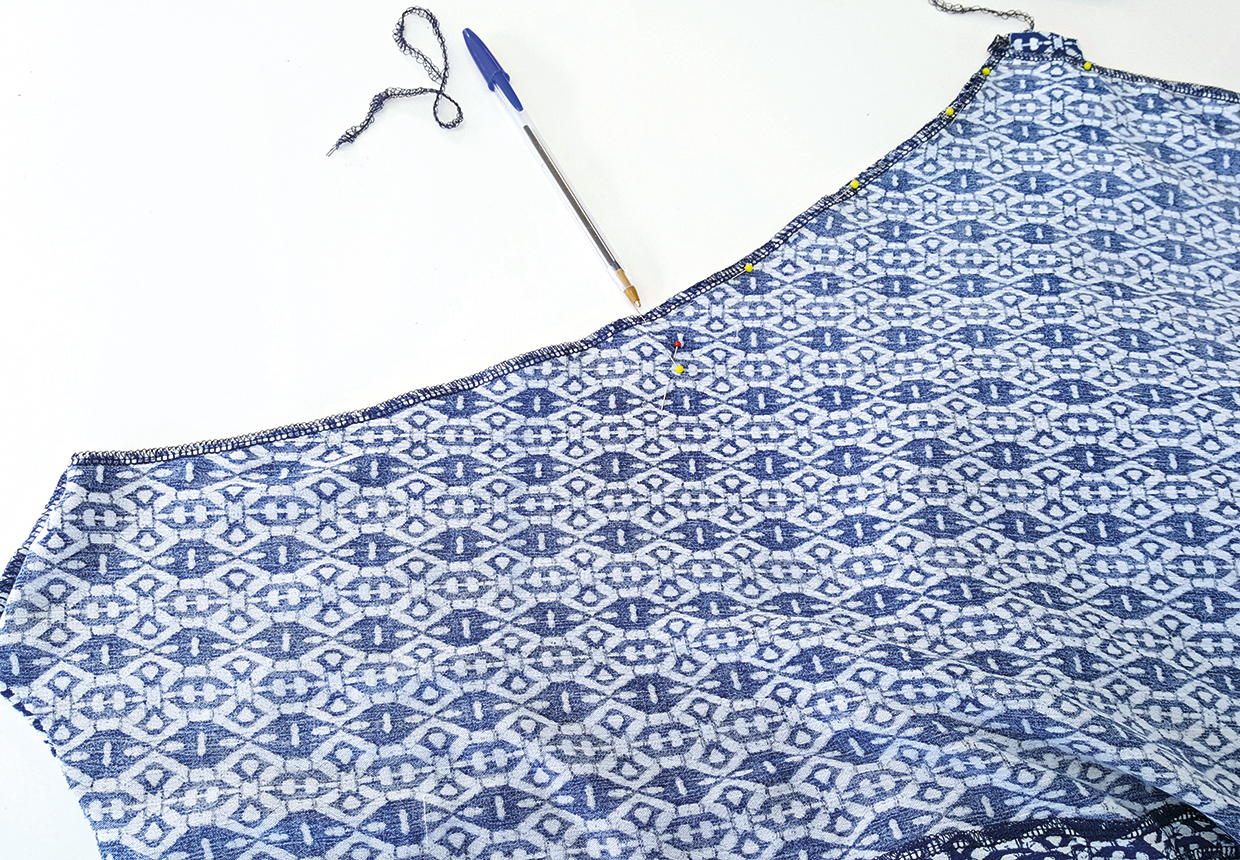
Step 6
Go back and run an extra line of stitching over the section containing the tie only as it will be a point of stress and so will benefit from some reinforcing.
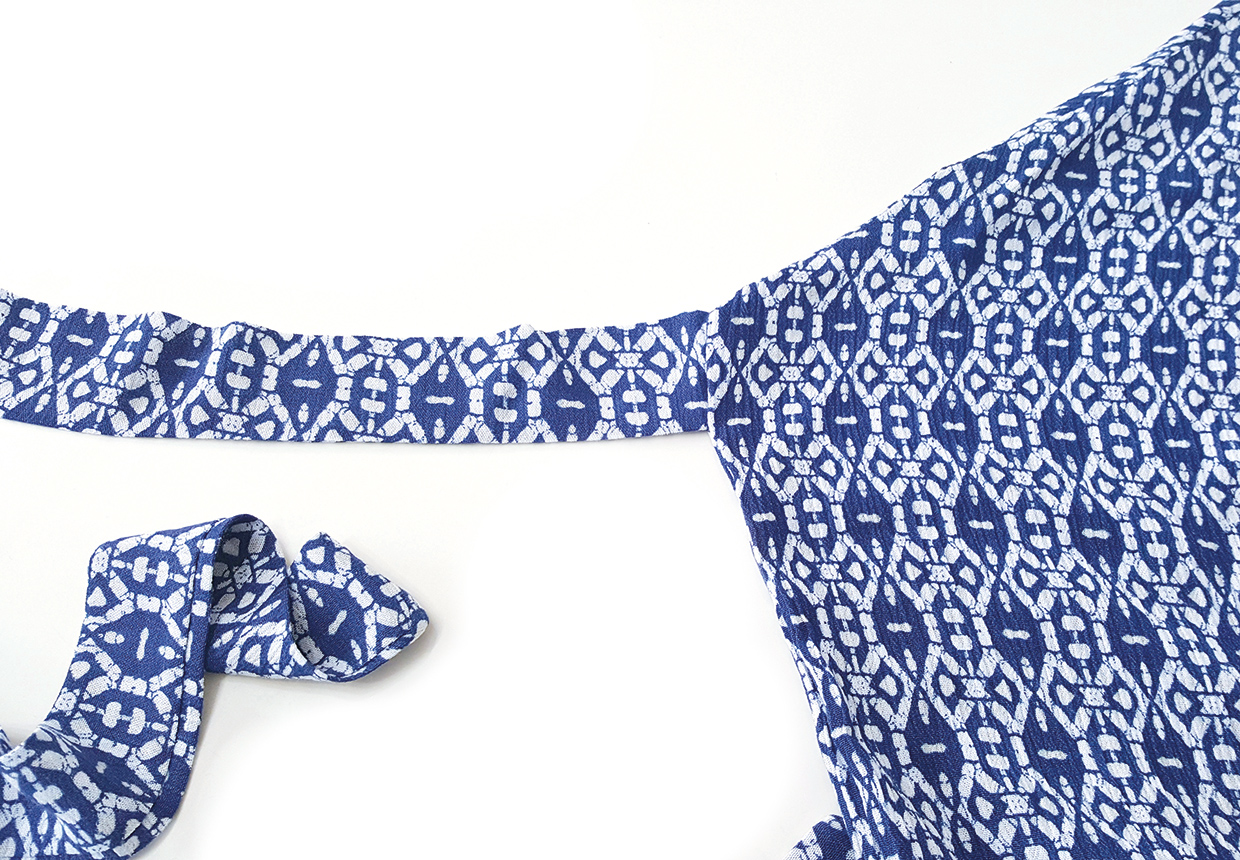
Step 7
Give all seams a good press open and flat. When pressing the side seams open, continue pressing past the armhole notch and all the way around the armholes. Topstitch the seam allowances in place to finish.
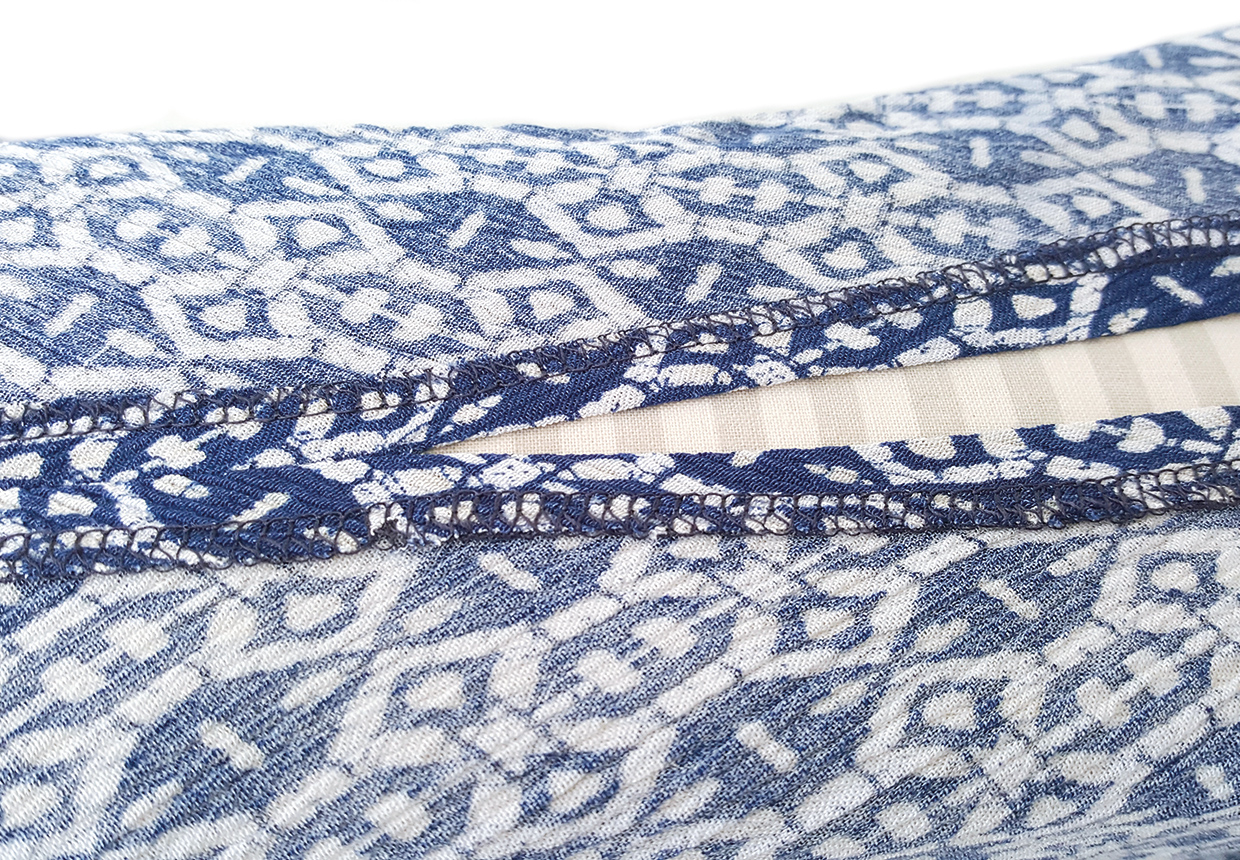
Step 8
Finish and stabilise the neckline by facing with bias binding. Sew the binding first to the RS of the neckline, press upwards, then understitch. Roll and press to the inside and machine stitch in place.
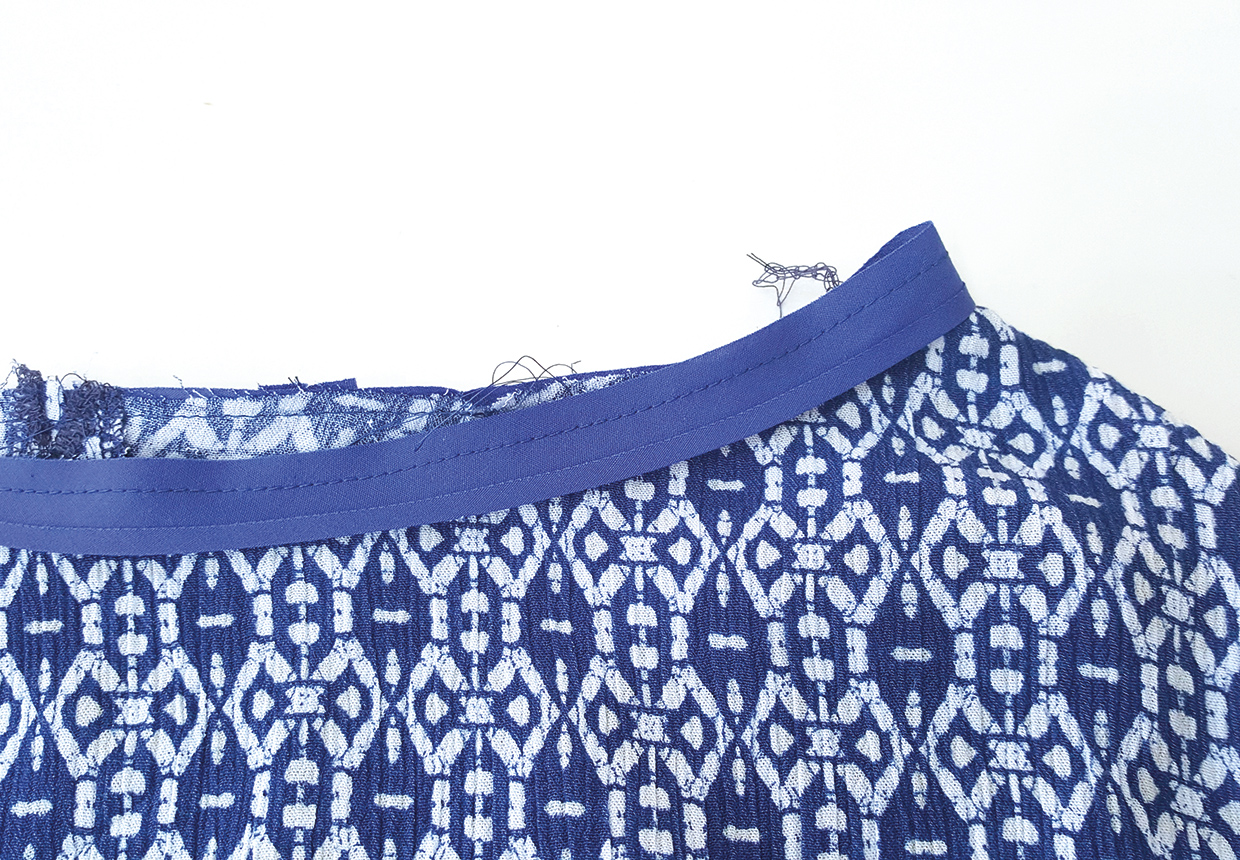
Step 9
Hem the dress, and you’re done! You now know how to make a wrap dress of your own.
